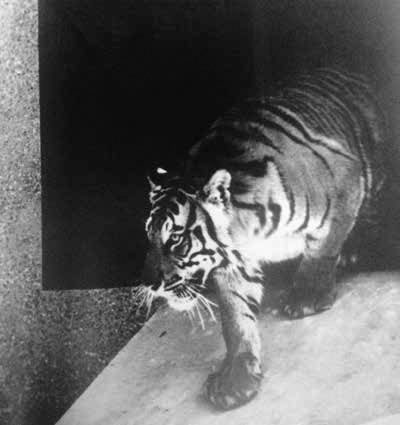HISTORY OF MIKE THE TIGER
Mike I
In 1934, Athletic Department trainer Chellis “Mike” Chambers, Athletic Director T. P. Heard, Swimming Pool Manager and Intramural Swimming Coach William G. “Hickey” Higginbotham, and LSU law student Ed Laborde decided to bring a real tiger to LSU, then known as the “Ole War Skule.”
They raised $750, collecting 25 cents from each student, and purchased a two-hundred pound, one-year-old tiger from the Little Rock Zoo. The cub was born on October 10, 1935, and was originally named Sheik. His name was changed in honor of Chambers, the man most responsible for bringing him to LSU. Interestingly, Mike I must have remembered his original name because even years later Hickey Higginbotham could get him to roar just by calling Sheik.
Early in the morning on Wednesday, October 21, 1936, onlookers lined Highland Road, awaiting the entourage arriving from the train station. LSU students staged a campus strike equal to none to welcome their new tiger mascot to campus. Mike I would assume his duties only three days after arriving on campus. He would reign at LSU for nearly twenty years, traveling with the team and serving as the LSU mascot. Mike I died on Friday, June 29, 1956 of complications associated with kidney disease. He was twenty years and eight months old at his death. He created a legacy in which Mike the Tiger has come to symbolize the heart and soul of LSU athletics.
Following Mike’s death, a fund was established to perpetuate his memory by mounting his pelt in a lifelike manner and displaying him at the university’s Louisiana Museum of Natural History, where it remains to this day.
1936-1956











